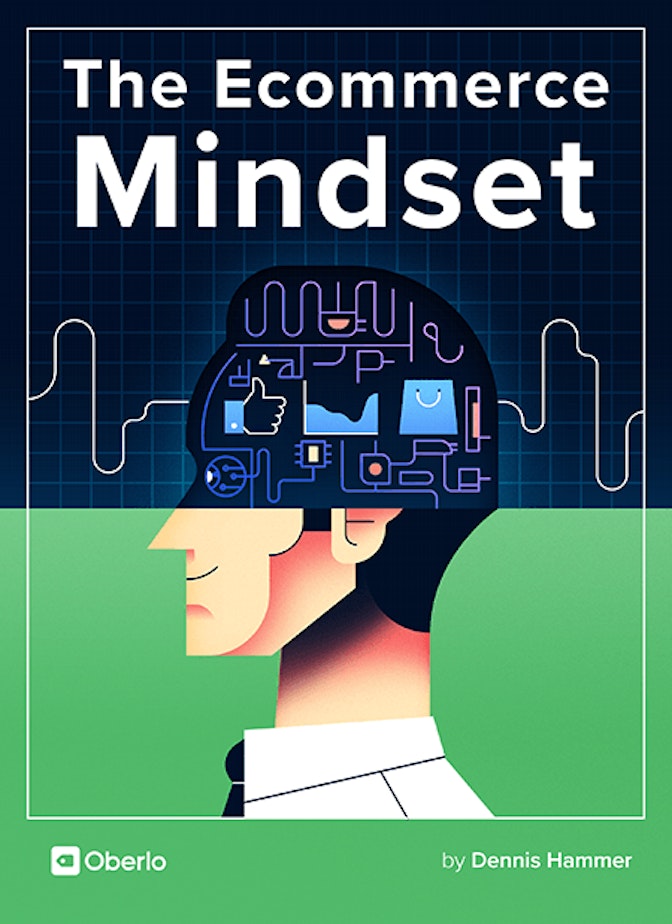When people buy products in brick-and-mortar stores, they usually hold the item in their hands before they make the purchase. They study it from all angles, hold it up close to their face, and examine the quality with their fingers. If the product is something they expect to wear, they’ll probably try it on.
But people don’t have this experience online. They miss all the information that’s usually immediately accessible to them just by holding a product in their hands. In this sense, you’re at a disadvantage because you can’t give them what they want for them to make a purchase.
This means your job is to create a product page that overcomes the touch-and-feel barrier. If you don’t, you’ll drive your would-be buyers to a store that does give them the information necessary to compensate for their inability to examine the product. (Alternatively, they just might make a trip to a brick-and-mortar store, where theycanget the information they need.)
[highlight]Oberlo recommendation:Check out these six storeswith stunning product pages.[/highlight]



Photos: Shoppers’ #1 Concern on a Product Page
Quality photos are your most effective tool on a product page.
According to Practical eCommerce, customers are 3 times more likely to make a purchase if an ecommerce store uses high-quality photos. In addition, quality photos are typically more consistent with a product’s actual look and features, which is why great photos lower return rates.
People remember 80% of what they see, but only 20% of what they read.
In other words, you could have fantastic copy, but the truth is, shoppers spend most of their time studying the photos (and videos, if you can swing that).If you aren’t showing your customers phenomenal product photos, you’re not creating a strong impression, which means you’re missing out on sales.
If you’redropshipping, it’s tough to get ahold of your own products unless you buy them yourself. This means you’re stuck with whatever photos the manufacturer or distributor make available to you. In some cases, the provided photos are abysmal (small, grainy, and not showing all the angles and features a customer needs to make a purchase). Plus, if any other online store sells the product from the supplier, you’ll be displaying the exact same photos.
If you only have the supplier’s photos, it’s fine to use them for the time being. (Your customersdefinitelywon’t buy if you don’t haveanyphotos.) But eventually, you’ll want to use your own.
One reason some people choose the dropshipping model is the low-cost barrier to entry. At some point though, it’s necessary to purchase every product you sell so you can take and display professional photos. (Having a product at your desk and in your hands will help you write better product descriptions and answer customer questions too.)
Can this approach be expensive?
It sure can.
But in the long run, the results are worth the investment. “Pictures sell,”says Sheila Dahlgren, senior vice president of marketing at Scene7, provider of on-demand rich media. “People do not buy what they cannot see, so the higher the quality and resolution of your imagery, the better your results will be.”
“Customers convert at a much higher rate and buy more when the product imagery on a site is better,” Dahlgren continues. “Customers are three times more likely to buy online when retailers offer rich imagery with the ability to zoom, pan, and see color options and alternative views of the merchandise, along with the products presented in context or on a model.”
如果你没有现金来买自己的产品s to photograph, don’t worry. Wait until you’ve made a few sales, and then use your earnings to fund your improvements.
Exploit the80/20 principlehere: Start with the products that sell the best (or you think will sell the best) before moving onto the others.
Use Copy to Compensate for Your Photos’ Shortcomings
Even the best product photos fail to supplant the brick-and-mortar shopping experience entirely. Shoppers want to know what your products feel like, smell like, sound like, and even what they taste like (sometimes).
You just can’t convey these sensations through photography.
This is where your copy comes into play. According to Salsify’s2017 Cracking the Consumer Code report, 87% of shoppers say product content is eitherextremely importantorvery importantwhen making a purchase decision. Moreover, 50% stated that they’ve returned an item because it didn’t match the product description.
Your product descriptions shoulddescribe everything the shopper could possibly want to know about your productthat you can’t convey through your photos.
Here are a few tips for writing killer product descriptions:
- Speak directly to your buyer personas.
- Use benefits-focused language (but mention features too, when appropriate).
- Use a tone of voice that matches your brand attributes.
- Make sure your tone of voice also suits your unique personality and style.
- Make your copy easy to scan and readable. (Don’t expect shoppers to invest too much time and effort into reading your copy.)
- Use keywords effectively to aid your search engine rankings.
- Make your copy compelling and unique. (Don’t use the copy provided by your supplier.)
- Don’t be afraid to get technical whenever appropriate.



Product Pages = Your Last Chance to Convert
If you spend a lot of time optimizing any one part of your website, let it be your product pages.
These pages are your last opportunity to turn a shopper into a customer. If they can’t find what they need on these pages, they won’t find it at all.
We recommend you spend some time exploring the layout, images, and copy on some of the最好的参与/易趣电子商务站点on the web. It’s smart to simply “copy” what the pros are doing until you get the hang of it and gather enough traffic and sales data for testing.


